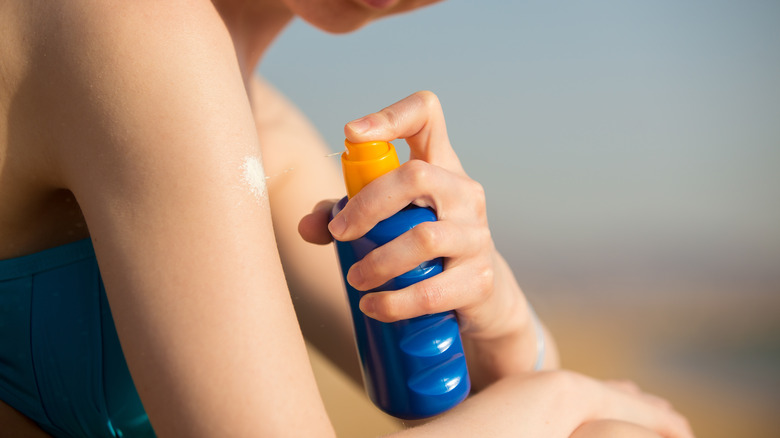What's The Difference Between Mineral And Chemical Sunscreen?
Summer tends to be the time when we're most aware of protecting our skin from the sun's harmful rays. Really, sunscreen should be part of our year-round regimen, however, protecting against both aging and the risk of skin cancer. With both chemical and mineral sunscreens available, which one is the best choice?
Mineral sunscreens are generally comprised of just two ingredients, zinc oxide and titanium oxide, and often leave a whitish tint when applied to the skin. They create a barrier of small particles on the skin that protect against the sun's rays, according to Everyday Health.
Chemical sunscreens can have up to 16 ingredients including cinoxate, dioxybenzone, ensulizole, homosalate, meradimate, and octinoxate, according to CNET. They allow the sun's rays to penetrate the skin but then convert them to heat, which disperses. Chemical sunscreens are generally easier to apply and don't need to be reapplied as often during the day as mineral sunscreen.
Chemicals can be absorbed by the body
In 2019, the FDA ruled that only two ingredients commonly used in sunscreen, zinc oxide and titanium oxide, which are the ones found in mineral sunscreen, are generally recognized as safe and effective (via NPR). Four other ingredients found in chemical sunscreen — avobenzone, oxybenzone, octocrylene and ecamsule — were discovered to be absorbed by the body at levels higher than the FDA safety threshold.
The FDA ordered further testing and did not put any restrictions on the use of chemical sunscreen. If, however, you are concerned about using it, reach for the mineral option. Though some of the less expensive options may leave a white residue on the skin, a few of the pricier brands have found ways to work around that issue (via Everyday Health).
The bottom line is that the damage caused to skin and risk of skin cancer is still greater than the risk of using any type of sunscreen. For your long-term health, make it part of your habits every time you'll be outdoors.


